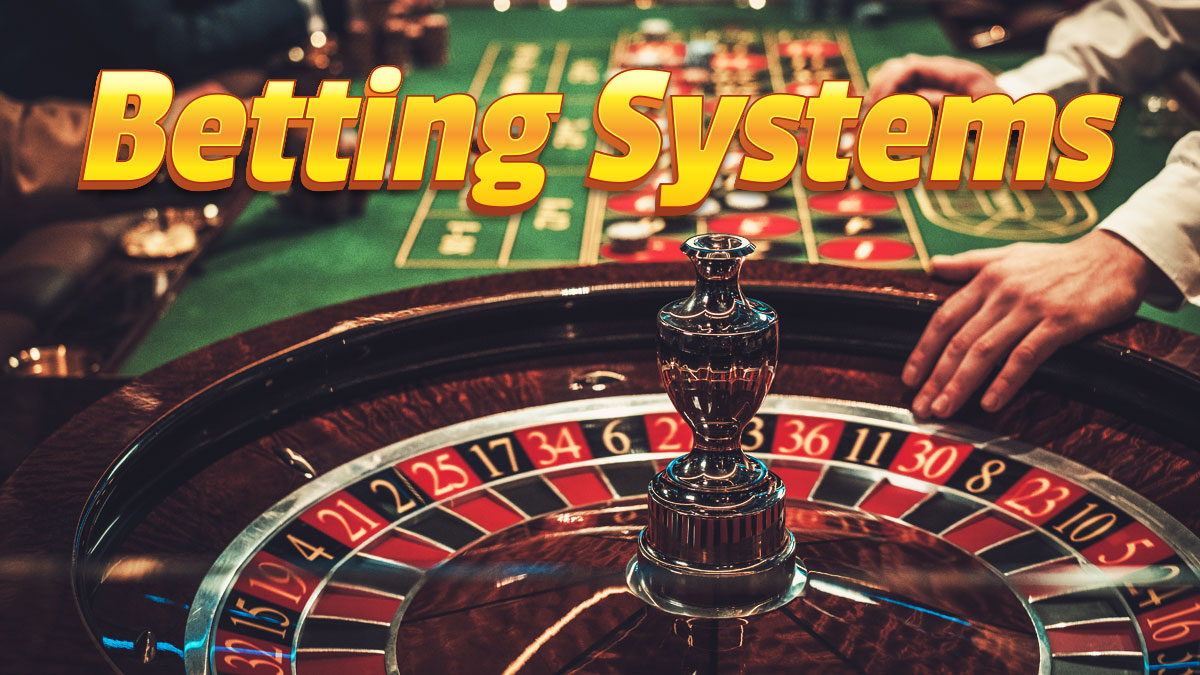Roulette doesn’t entail a lot of strategy. You merely need to find the best variation available and play it to achieve optimal strategy.
French roulette offers the best opportunity to win due to its 98.65% RTP. European roulette is a close runner-up with 97.30% RTP.
Of course, some gamblers like bringing additional strategy into the equation to challenge themselves. They use betting systems for this purpose.
A roulette betting system sees you place wagers based on a specific pattern. It can lead to big short-term winnings when things are going well.
The only problem, though, is that you may experience a great deal of volatility with systems. That said, are there any roulette gambling systems that offer lower volatility?
Yes. In fact, you can use any of the following three strategies to reduce volatility and still enjoy the use of systems.
1 – Oscar’s Grind
This system revolves around even-money bets. It helps you win back losses from losing streaks and end with a small profit afterward.
Here are the steps to using Oscar’s Grind in roulette:
- Set a unit size (normally the table’s minimum bet).
- You bet 1 unit.
- You continue betting 1 unit during a winning or losing streak.
- You bet 2 units on the first win following a losing streak.
- Keep adding 1 unit until you reach a profit of +1 or more units.
- The sequence starts over once you’ve earned +1 unit following a losing streak.
Oscar’s Grind allows you to chase losses without going overboard. If everything works out—as it often does with this system—you’ll climb out of the red.
Here’s an example of putting Oscar’s Grind into practice:
- You wager 1 unit and lose (your bankroll at -1).
- You wager 1 unit and lose (your bankroll at -2).
- You wager 1 unit and lose (your bankroll at -3).
- You wager 1 unit and lose (your bankroll at -4).
- You wager 1 unit and win (your bankroll at -3).
- You wager 2 units and lose (your bankroll at -5).
- You wager 2 units and lose (your bankroll at -7).
- You wager 2 units and win (your bankroll at -5).
- You wager 3 units and win (your bankroll at -2).
- You wager 3 units and lose (your bankroll at +1).
- Return to a 1 unit bet.
This staking strategy calls on you to raise wagers when you’re losing. However, it does so in a controlled manner that only involves adding another unit following a loss. With luck, you won’t ever need to risk more than 3-4 units in a session.
2 – The 3/2 System
The 3/2 system is named for how it sees you place three betting units on a color (red/black) and two units on a column. Here are the two ways that you can use the 3/2:
- Bet 3 units on black (1:1 payout) and 2 units on the third column (2:1).
- Bet 3 units on red (1:1 payout) and 2 units on the second column (2:1).
Neither of these options has an advantage over the other. They’re just different ways to accomplish the same goals.
What are the goals of this strategy?
Here are a few objectives that you achieve through this system:
- Cover around 70% of the pockets on the wheel.
- Wager 1 unit every time you book at least one win.
- Wager 7 units whenever you win both wagers.
You may take pause when considering that you’ll need to risk five units in every single round. However, the fact that you’re covering 70% of the wheel and usually earning at least +1 unit greatly reduces the volatility.
You will experience rounds where you lose both wagers and, as a result, 5 units. But you’ll also benefit from the times where you win both bets and collect a 7-unit profit.
3 – Column King
True to its name, this system revolves entirely around columns. Much like Oscar’s Grind, it helps you win back losses and end up with a small profit.
This strategy begins with making the table’s minimum bet on any of the three columns. If you win, you’ll collect a 2:1 payout place another bet on any of the columns.
Assuming you lose, then you’ll make a wager on the same column. If this bet results in a win, then you collect the payout and, again, wager on any of the columns afterward.
In the event of a loss, you progressively increase bets until earning losses back and booking a small profit. Thanks to the 2:1 column payouts, you can chase losses with relatively small increases.
If the table’s minimum bet is $1, for example, then your roulette betting sequence would look like this:
- $1 bet – Win here and you get a +2 unit profit; lose and wager $1 again.
- $1 bet – Win here and you get a +1 unit profit; lose and wager $2.
- $2 bet – Win here and you get a +2 unit profit; lose and wager $3.
- $3 bet – Win here and you get a +2 unit profit; lose and wager $4.
- $4 bet – Win here and you get a +1 unit profit; lose and wager $5.
- $5 bet – Win here and you get a +1 profit.
You start over following any win. After all, you’ll have made all the losses back and collected a small profit in most cases.
Assuming you lose the sixth wager ($5), then you can either start fresh at $1 or keep increasing bets. The latter option is risky but could be worthwhile if you have the proper bankroll.
Why Is Volatility Important with Roulette Systems?
The roulette world is filled with various betting systems. Each one of these strategies features a different level of volatility.
High volatility offers a chance at bigger short-term winnings. If this is your objective, then you’ll find the Paroli system worthwhile.
The Paroli calls on you to double bets after each win. You continue doubling wagers until either hitting three consecutive wins or losing. In both cases, you’ll revert back to the original stake.
The Labouchere presents yet another high volatility system. It calls on you to write out a string of numbers (e.g. 2, 3, 4, 3, 2) that represent your betting units.
You combine the end numbers on the string (2 + 2 = 4) to choose your next bet. After a win, you cross out the numbers and combine the next available digits (3 + 3 = 6).
Following a loss, you add the losing bet (4) to the end of the sequence (2, 3, 4, 3, 2, 4). The goal is to win enough wagers to cancel out the entire number string and collect the total value in profits (12 units in the example).
The low volatility systems covered throughout this post, on the other hand, may not be as exciting. But they still allow you to enjoy the thrills of using a betting strategy. They’re also less likely to take your entire bankroll when things are going well.
It’s up to you to choose a volatility level that you’re comfortable with. If you’re unsure of systems to begin with, then I suggest picking one of the less-risky strategies covered here first. Assuming you like using a staking strategy, then you should move on to trying other systems.
Will Using a System Boost Your Chances of Beating Roulette?
The betting strategies described above will lead to plenty of winning sessions. These systems’ low volatility helps on two fronts:
- You’re less likely to hit the table’s maximum limit.
- Your bankroll is less likely to run out.
The first point is key because some systems (e.g. Martingale) can rapidly accelerate your losses. After hitting the table’s max limit, you won’t be able to increase bets when needed.
Volatile strategies can also increase the risk of losing all of your money. You’re much less likely, though, to lose everything with the systems covered in this post.
Of course, less risk and winning guaranteed profits are two separate things. Neither Oscar’s Grind, the 3/2, nor Column King will overcome the house advantage.
You may feel like you’re invincible following winning session after session. However, these strategies will eventually put you through cold streaks.
If you’re looking for frequent profitable sessions, then these betting strategies are worthwhile. Just don’t expect to suddenly turn into a professional roulette player.
Conclusion
You don’t have to take on considerable risk just to use a roulette betting strategy. Instead, you can use less-volatile strategies and still enjoy the benefits of systems.
Oscar’s Grind and Column King are nice if you want to walk out of the casino a winner. You’ll rarely end up in the red with these strategies.
The 3/2 delivers lots of +1 unit profits along with some +7 unit wins too. You do have to risk 5 units on every spin, but you’ll win this money back and then some 70% of the time.
Michael Stevens
Michael Stevens has been researching and writing topics involving the gambling industry for well over a decade now and is considered an expert on all things casino and sports betting. Michael has been writing for GamblingSites.org since early 2016. …



